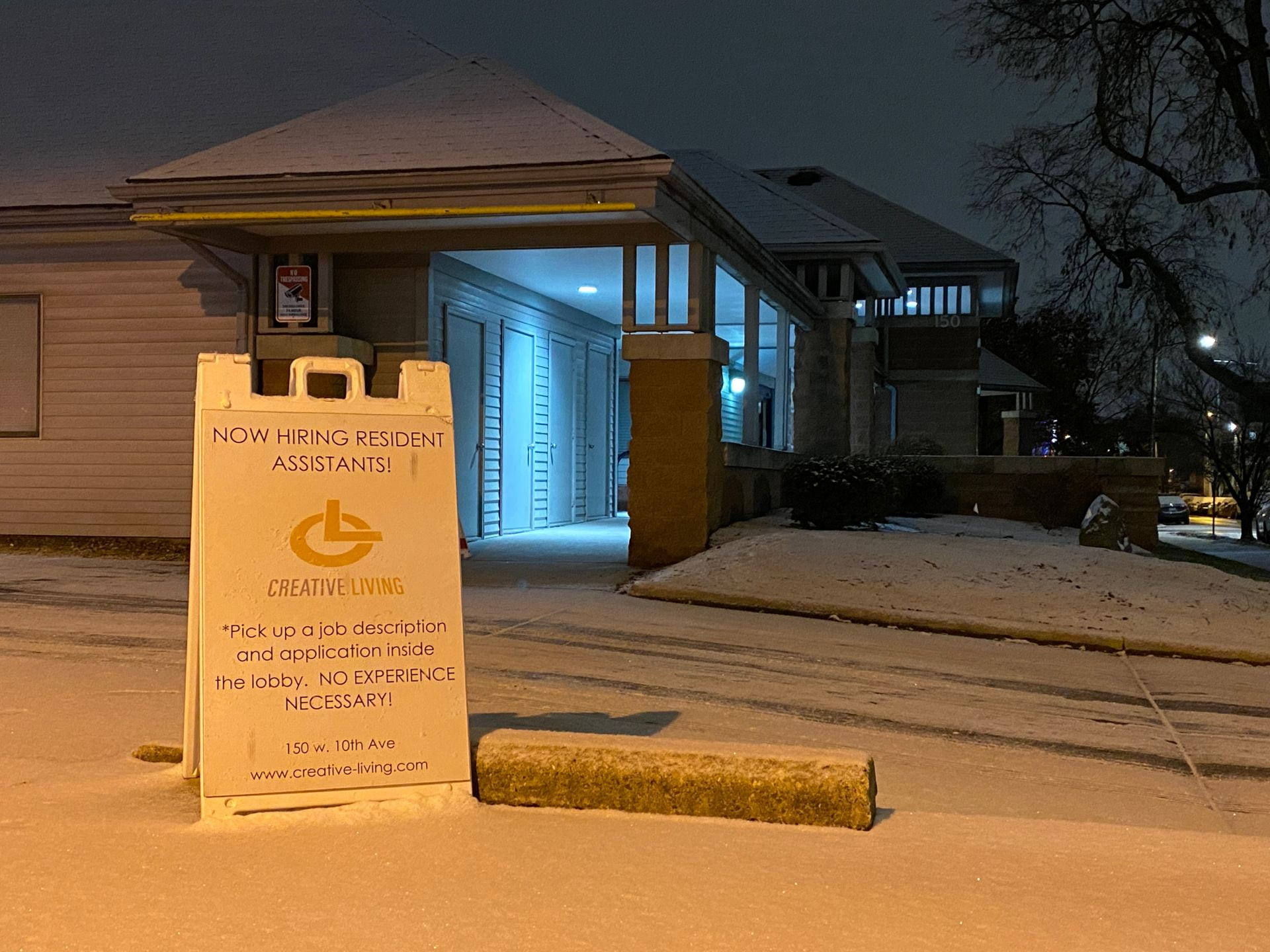Disability aid shortage leaves some Buckeyes without assistance

A sign advertising open positions in front of Creative Living’s 10th Avenue location. Credit: Brody Serravalli | Lantern Reporter
A shortage of disability services providers has left some Ohio State students without the assistance they require to perform day-to-day tasks.
According to a 2021 report by the American Network of Community Options and Resources, the shortage is the result of the pandemic, exacerbating an already declining number of caregivers available nationwide prior to COVID-19. These caregivers support individuals with intellectual and developmental disabilities, often around the clock and in residence.
Scott Lissner, Americans with Disabilities Act coordinator and 504 compliance officer at Ohio State, said because the university does not provide personal attendants outside the classroom, students with disabilities who require personal care must arrange it through private agencies. He said the shortage comes from a combination of factors, including low wages and the pandemic.
“Close personal work is not something people are largely seeking out during a pandemic,” Lissner said. “But also part of it is the pandemic has highlighted some work shortages and some facts that there are industries that are underpaid for the level of work they have to do.”
Lissner said in an email that while the university sometimes helps students and employees find aides, there is no reliable data available to reflect the scope of the effect the shortage has had on Ohio State community members.
The shortage has also been felt by students living in specialized assisted-living communities such as Creative Living — a nonprofit that provides housing for people with disabilities near south campus. David Pratt, resident assistant coordinator at Creative Living, said the organization has had difficulty filling staff positions for over a year.
“We haven’t had the people applying,” Pratt said. “It’s made it harder for me to manage a staff.”
Pratt said the lack of new hires has put a strain on the resident assistants currently on staff at Creative Living, requiring him and others to work extra hours to meet the 24/7 needs of residents.
The shortage has also made it more difficult to find high-quality caregivers. The report from the American Network of Community Options and Resources stated that 81 percent of providers are struggling to achieve “quality standards of care.”
Kayden Gill, president of Buckeyes for Accessibility at Ohio State, said the shortage has made the already complicated task of finding a reliable caregiver even more challenging.
“There’s a struggle sometimes with finding the right people,” Gill said. “Getting someone who’s kind and professional and empathetic and treating you like a human being.”
Because students with disabilities may struggle with day-to-day needs when lacking in-home assistants, this can affect how they perform in other aspects of their lives, Gill said. He said the shortage has affected the ability for students with disabilities to do well in school.
“If you need someone to help you do that for yourself, and you don’t have that person, it can affect your school performance,” Gill said.
According to the National Core Indicators 2020 Staff Stability Survey Report, the national average hourly wage for disability aid professionals is $13.61.
While some employers have opted to raise wages over the course of the pandemic to attract new caregivers, Pratt said it has done little to remedy the shortage.
Gill said the pay is insufficient for the work caregivers do, partly driving the shortage of workers.
“It’s an emotionally and physically intense job, but it’s not treated that way when it comes to pay,” Gill said. “It’s viewed as this menial labor kind of task.”
Read More: Disability aid shortage leaves some Buckeyes without assistance

